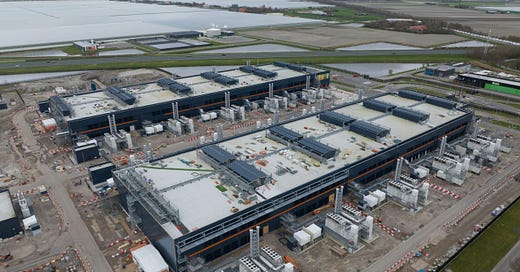Breaking: New Trump Administration Coal Order Will Force Consumers To Pay More
Propping up expensive coal plants won’t fix power demands of AI boom
New executive orders from the Trump administration that will force coal-fired power plants to stay open to power skyrocketing data centers and AI growth will force American consumers to pay more every month.
The orders, issued this afternoon, instruct the Interior Department to resume coal leasing on millions of acres of public lands and order the Energy Department to identify how coal-fired power plants already scheduled to retire can be kept online to supply electricity for AI data centers.
But the truth about coal-fired power is that it’s expensive and blocks consumer from cutting their energy bills. Energy Innovation’s Coal Cost Crossover report shows that 99 percent of the existing U.S. coal fleet costs more to simply keep running than retiring the coal plant and replacing it with local solar, wind, and batteries.
Electricity consumers save money when coal plants retire and are replaced by clean energy – building new wind or solar costs at least 30 percent less than running existing U.S. coal plants.
In fact, America’s coal fleet is so much more expensive, that letting them close and replacing them with local clean energy would save utilities enough money to finance nearly 150 gigawatts of four-hour battery storage (the U.S. has about 26 GW storage on the grid today), and would generate $589 billion in new investment across the U.S.
And we don’t need that expensive electricity anyway.
Even though power demand is spiking due to data centers, a manufacturing boom, and electrification – data center demand alone could grow between 74-132 GW of demand growth from data centers, using 6.7- 12 percent of U.S. electricity by 2028 – we don’t need to fill the gap with fossil fuels.
Energy Innovation research shows utilities and their regulators can reliably meet rising electricity demand without building new fossil fuel generation or extending the life of fossil fuel plants slated for retirement.
Improving the energy efficiency of data centers by shifting computer workloads across facilities, reducing operations, or relying on backup power or onsite storage can cut down fast-rising demand without locking consumers into costly fossil fuels.
Utilities need to build power plants quickly to meet increased demand, and clean energy is the way to meet that imperative. NextEra, one of America’s largest utilities, recently laid out this trend, saying “you can build a wind project in 12 months, a storage facility in 15, and [a] solar project in 18 months.”
That’s why 93 percent of new generation capacity added across America’s grid in 2024 was solar, storage, and wind. Meanwhile the last new coal-fired plant built in the U.S. came online in 2013 and planned coal-fired plant retirements are set to grow 65 percent in 2025.
History shows what happens when utilities make fossil-fueled mistakes to meet projected demand growth. In the early 2000s, another data center boom sent electricity demand projections skyward, and utilities planned a wave of new coal plants. That electricity demand ultimately failed to appear, largely due to measures like energy efficiency, and some coal plants that did come online are planning early retirement.
The Trump administration promised to cut American energy bills in half – this is yet another way its regressive energy policies would force Americans to pay more.
With prices spiking from tariffs, our households and businesses simply can’t afford another hit to their budgets.








